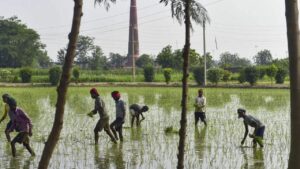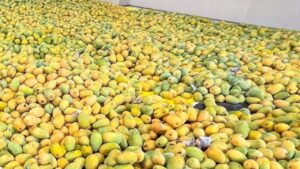All of this led India to experience coffee in the financial year 2024-25. India’s coffee exports were recorded at $ 8 billion due to the incredible thirst of caffeine-lovers like Italy, Germany and Belgium. The rate was not in accordance with the proportion. During the year, India exported approximately 555 million kilograms of coffee, which increased by 8.5% compared to the financial year 123-54. The wave was not worth the volume-LED, but the wave.
Aunt
In the middle of this advancement, Kodu is in the country, which is the unpredictable coffee capital of the country, which was quietly transmitted from his valuable Arabica colony to a rigid and increasingly valuable robust. Today, Kodagu’s rich plantation on the Kaveri river produced the mystery hills and the LEA, the coffee of India-35-40% and played a starred role in recent exports.
Beyond Kodagu, other major regions of coffee-productive include both Chikumgalur and Hasan-Karnataka, as well as parts of Kerala, Tamil Nadu, Northeast and Arabica Exclusive Arku Kho Valley.
In recent years, the demand for robust has increased globally – a large number of instant coffee manufacturers have discovered high caffeine content and caffeine in robust is twice as much as Arabica – India is ready. Meanwhile, last year, coffee production between Brazil and Vietnam, which supplies 80% of the world’s coffee, was suffering from climate disruption and other problems. This increased global prices. This moment was relatively small players suitable for India, so that the world coffee exports are only %. In the financial year, Italy has maintained its position as India’s highest coffee buyer. Germany, Belgium, Libya and the United Arab Emirates (UAE) were the other countries in the first five. According to the Delhi-based Trade Think Tank GTRI, the UAE’s growth has increased by more than 30%, while Belgium and Libya doubled imports.
Strong (a) economy
“A long time ago, India had 70% coffee Arabica and 30% robusta. Today, the number has changed,” says MJ Dinesh, president of the Coffee Board of India and an experienced cultivation of Chikmgalur. This mountainous district is ranked second in the output, yet the abundant stress of Arabica is maintained, especially at high altitude. He goes on to say, “Coffee game is changing.” India’s washed robes are now seen as one of the best in the global market. Throughout Europe, a new wave of customers is developing a robust taste rather than Arabic – and that shift is working in your favor. ”
In Kodagu, most, 000 44,3 coffee estates – many of them are less than 1 acres acre – Nesley, Hindustan Unilever, Tata Coffee, Continental and Lavaza change their production. These companies operate coffee mills or coffee houses in Kushalnagar, district headquarters, a solid area east of 30 km east of Madikery. The mills are in Kushalnagar strategically, which receives less rainfall than the surrounding mountains, which make it ideal for the process.
Once the harvest is completed-especially for November to Arabica and for the Robbust and coffee and coffee, export-finished beans are loaded into 20 feet containers and about 170 km. The distance is taken to Mangaluru by the road. From there, the feeder ship takes them to the big ships docked on ports such as Kochi, Colombo or even Gujarat in Gujarat for a next trip to Europe or the United States.
“The transition from Kodagu to Arabica from Arabica to Robbsta has been rapidly faster than places like Chikumgalur or Hasan, which is why we have benefited more unprecedented spikes,” says Vishwanath Kake, CEO of Kodagu-Biota Korge Farmer Producer Company. While Palana Hills (Pulani) in Yerkod in Tamil Nadu and the Shevrays region are supporting Arabica, the Vayanad of Kerala and the next southern manufacturers have long hugged the robust.
Dipped recently
However, Vishwanath says that the recent slide in robust prices is causing discomfort among local cultivators. Earlier this week, coffee prices have dropped, Arabica and Robasta were submerged in five months and one -year low, mainly due to the improved supply approach. Currently, the washed robust is trading Rs. 3, Rs 3, 3 for KG 2 kg from a high of Rs. Arabica is now priced at Rs 25,500, which is Rs 29,500. Estate owner and president of the Curge Plants Association, established in 779 79 In, is changing the game to export coffee to the growing tendency to join hands through farmers’ productive companies. He says, “The Biota Kurmer Producers Company, along with 3 member-enhancing, has been linked directly to the exporters. This has allowed us to run on the World Robbasta Price Wave instead of selling our production to multinational cure houses,” he says.
Beliappa is not much worried about the recent submergence of robust prices. They believe that irregular weather practices will prevent global coffee production. He is more concerned that the constant shortage of labor. He said, “Due to many government welfare schemes, many people are not ready to take up the job of plantation. It is more difficult to find reliable workers,” he further said that coffee cultivation in Kodagu is given to about 1,000 workers and the number of All-Indian is 1000.
Most of the cultivators in Brazil have complained about the highest labor costs in India compared to only 25% of Brazil. In Vietnam, the cost is even lower, the more the fieldwork is done by the family members, they say.
Beliappa adds to the increasing labor costs and beyond the lack of workers, frequent human-elephant conflicts in the district have become a serious concern. Abhishek V, who passed the top of the hill of Madikery in his office, Abhishek V says that coffee plantation in Kodagu is often among elephant corridors and habitats, and human-elephant clashes become almost inevitable. He said, “Most colonies use jackfruit plants for shade and when fruits are ripe, they admire elephants,” they confess that such attacks and attacks – regular events in the district. According to the census of 223, Karnataka, which has a population of elephants, has a population of 3.95 components and India has the highest number of wild elephants.
Indian coffee is mainly grown under the roof cover, shade plants, spices and horticultural crops are woven in the landscape, which is so dense and natural that attracts wandering elephants.
Eu and me?
India’s traditional coffee cultivation method can be an advantage under the European Union Forestry Regulation (EUDR), which is implemented on December 225. The objective of this regulation is to keep the products, which are related to the decoration of the forest and the forest after December 1, after December 1, they have gone out of the EU market.
Biota’s Vishwanath says, “As long as the EUDR question is classified as a low risk country.” You will not find an example of the forest land has been cleared in recent years to create a way for coffee cultivation. ”
Sustaining and environmental responsibilities in Western coffee consumers has become important issues, but a group of entrepreneurs in Kerala is taking it one step – not only for quality but also for the way to deal with moral farming as a tool for dealing with climate change. The company says it follows organic fields and uses at least water for irrigation and processing.
Only Kofounder of Ink, established in 2016, Simmel CP, says, “We place themselves as a weather-cooling coffee company. He believes that the forest regulation of Europe will work in favor of Indian exporters. He further said,” Once India is seen as a source of traditional, low-quality coffee. This understanding has changed. We are extremely skilled in the coffee process, “he added.
Although Ekta owns only one estate in Chikumbalgal, it has created a partnership with India and beyond India and beyond guidance with Peru, Kenya and Ethiopia-Havan-friendly coffee. Former banker, Kofalander Vijit, says that alone exports directly to the customers of Europe and other regions to end the mediators, and to retain the higher source of sources.
Prices will continue to rise at the World Trade Terminal and the waves between the LEs of Kodagu’s Misty Hills and Sao Powlo, then go beyond the Indian coffee market .It can hold your field for this reason.
“Indian coffee shade-over-theater, hand-chosen and sun-swept-this is our unique signature,” says Mandana. “On the contrary, the brazel depends on the machine and the artificial dryer for the process.”
He also pointed out to the emerging tendency of Vietnam in the world, where some traditional coffee -growing land is being re -made to increase the durian crop, which is widely exported to China.
In the fast -changing world coffee landscape, India can stand out. At the time, when machineization is being created worldwide, India’s hand-selected and sun-soaked beans have the taste of the soybean that cannot replicate the machine. But the question is: If the lack of labor remains, will they have enough hands to choose?
.




